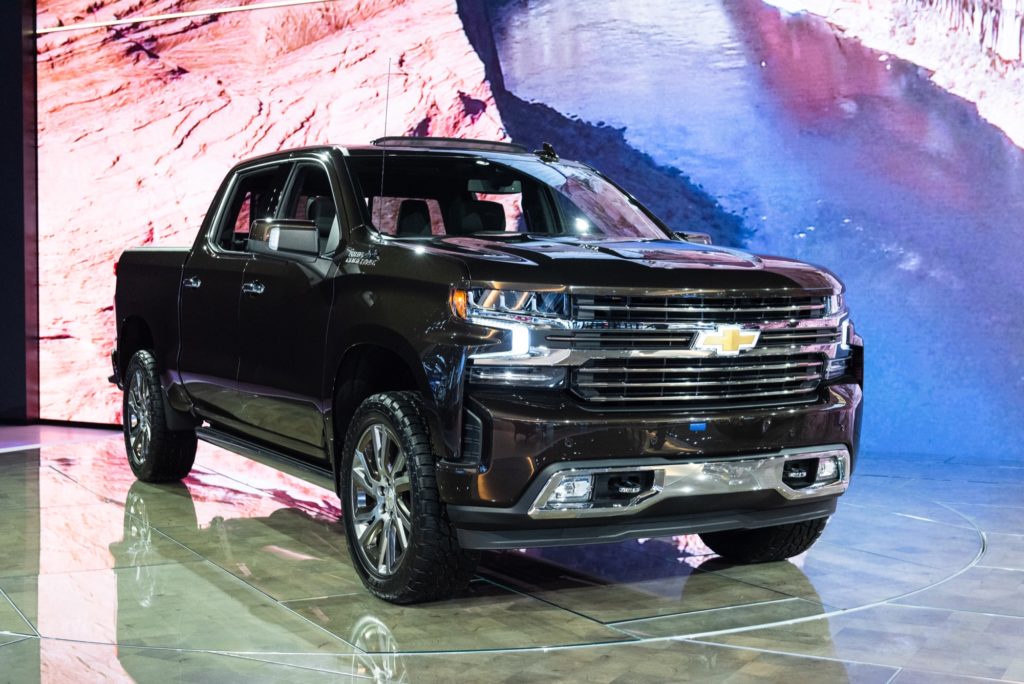I Get 10 Miles to the Gallon/I Ain’t Got No Good Intentions

There’s nothing more white American male than a big ass truck and it’s absolutely a political statement. That’s especially true because they just get bigger and bigger, far past their original construction as useful vehicles. They are also deadly:
This behemoth design trend — particularly the very tall, square front end seen in so many SUVs and trucks today — is both pointless and dangerous. Manufacturers have known for years that this style of vehicle is much more dangerous to pedestrians and cyclists, yet they keep making them bigger, taller, and heavier. Trucks and SUVs now make up fully 70 percent of all new cars sold in the U.S. Their bloated design is killing people, especially pedestrians.
When I made this observation on Twitter (in somewhat hyperbolic fashion), conservatives got steamed. Senator Ted Cruz (R-Tex.) accused me of being “afraid” of pickups. For the rest of the day, I got to enjoy good old conservative facts and reasoned debate: sexist and homophobic slurs, lurid fantasies about vehicular homicide, and repeated assertions that I drive a Prius — which appears to be the automotive equivalent of soy in the conservative mind palace. (I do not currently own a car of any kind, for the record.)
It does seem rather far-fetched to think that automakers are consciously building their biggest trucks to be more dangerous to pedestrians, but that is actually the case. To see why, let’s start with some data. According to the Governors Highway Safety Association, there were 6,283 pedestrian fatalities in 2018, an increase of 53 percent compared to 2009 and the highest figure since 1990. That gives the U.S. a figure of 19 pedestrian deaths per 1 million population. By contrast, France and Denmark had rates of 7.0 and 5.2 that year — especially remarkable because walking around in Paris and Copenhagen is far more common than it is in most American cities. Indeed, not long ago the European Union had a considerably greater rate of pedestrian fatalities than America, probably because walking is so much more common there. But the E.U. has cut pedestrian deaths by about 40 percent between 2007 and 2018 (from over 8,000 to about 4,900), while the U.S. has gone the opposite direction. Oslo and Helsinki did not have a single pedestrian death in all of 2019.
What gives? One factor in pedestrian deaths generally is that American cities are, as a rule, designed to accommodate cars at the expense of any other method of travel. Anyone who chooses to walk or bike somewhere in our sprawling, car-clogged cities is taking her life in her hands. But that doesn’t explain the recent increase. American cities have not been drastically re-engineered to be even more car-centered since 2009 — on the contrary, there have been some hesitant steps in the opposite direction.
No, the main reason for the jump in deaths is the increasing proportion of SUVs and trucks on the roads. As a major Detroit Free Press/USA Today investigation by Eric D. Lawrence, Nathan Bomey, and Kristi Tanner reveals, both manufacturers and federal regulators have known for years that big, tall vehicles are more dangerous to pedestrians and cyclists — something like 2-3 times more likely to kill when they hit someone. The reason is obvious: where a sedan will hit a standing person in the leg, usually causing them to roll onto the hood, a tall, flat-nosed truck will hit them in the torso, knocking them down and often running them over, and causing much more severe injuries. A study from the Insurance Institute of Highway Safety found that between 2009 and 2016, “fatal single-vehicle crashes involving SUVs increased 81 percent, more than any other type of vehicle.” Yet as Lawrence, Bomey, and Tanner write, “A federal proposal to factor pedestrians into vehicle safety ratings has stalled, with opposition from some automakers.”
But at least the truck drivers can get some good laughs by forcing bicyclists off the road or roll some coal on the libs (which happened to me last year in rural upstate New York).


